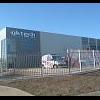Do You Have Air Con On Your Car?
Announcements
-
Similar Content
-
Latest Posts
-
My 3.8 kW system (when new, not so much nearly 20 yrs later) will do 21 kWh per day (best few months of the year), and that's with an afternoon shading issue. So it really could/should be able to do maybe 24. So a 6.6 kW system probably cannot fill a 40ish kWh battery from scratch, but then it is very unlikely to ever need to. Let's presume that you use 10-15 kWh during the day and stash the rest. So long as the battery isn't drawn down below ~50%, it'll be fine. And that draw down presumes using 20 kWh overnight, which is a reasonably heavy draw. So that seems reasonable. The 40kWh will be good for extended outages, and very bad days where you get almost no generation for a day or two. Might struggle to top it all the way back up after it gets pulled all the way down though. I'd think you'd probably want about 10 kW of panels to make life a little easier, wrt keeping a 40 kWh battery charged. But then....does it really need to be at 100% every day? Probably not.
-
Am I wrong in thinking that there is a hell of a lot of battery storage for a 6.6 feed into it Your battery is around 4 times bigger than the battery that is going into my place in a week, but I have nearly twice the feed Will the batteries actually ever get fully charged? School me on the science bitches
-
Wow ELVIS. You have an....interesting approach to conversation. Did you not notice that I wasn't talking to you?
-
Hello Liam - HA - somewhere in flies - possibly I have an update, but I have been so busy, projects have taken a back seat to getting business back on track. I will let you know the outcome, but I think I am going to go for the 8HP, CHEERS. ELVIS
-
Thanks Joshuaho96, yes - as someone else also suggested, the 8HP seems the 'smart choice' - HA - and ZERO to do with cost, but I am sure 8 speeds will be better than 6 speeds - HA - maybe. I will purchase a new 8HP, Thanks. ELVIS.
-






Recommended Posts
Create an account or sign in to comment
You need to be a member in order to leave a comment
Create an account
Sign up for a new account in our community. It's easy!
Register a new accountSign in
Already have an account? Sign in here.
Sign In Now